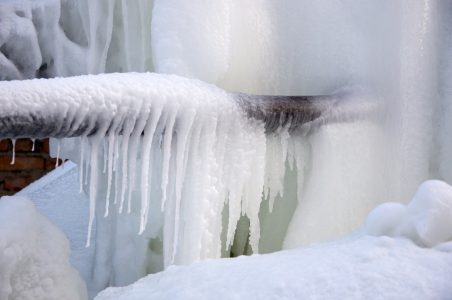Are you currently trying to find content concerning How To Avoid Freezing Pipes?
.jpg)
Winter can wreak havoc on your plumbing, especially by freezing pipelines. Below's how to prevent it from happening and what to do if it does.
Introduction
As temperature levels decline, the threat of frozen pipelines rises, possibly bring about pricey repair services and water damage. Recognizing exactly how to avoid frozen pipes is important for property owners in cold environments.
Prevention Tips
Insulating at risk pipelines
Cover pipes in insulation sleeves or make use of heat tape to shield them from freezing temperatures. Focus on pipelines in unheated or exterior locations of the home.
Heating methods
Keep interior rooms appropriately warmed, particularly areas with pipes. Open cupboard doors to allow warm air to flow around pipes under sinks.
Exactly how to recognize frozen pipelines
Look for reduced water circulation from taps, unusual odors or noises from pipelines, and noticeable frost on exposed pipes.
Long-Term Solutions
Architectural adjustments
Think about rerouting pipelines away from outside walls or unheated locations. Include extra insulation to attics, basements, and crawl spaces.
Updating insulation
Buy top quality insulation for pipelines, attics, and walls. Appropriate insulation aids keep constant temperature levels and decreases the threat of icy pipelines.
Shielding Exterior Pipes
Garden hose pipes and outside taps
Separate and drain yard hoses before winter. Install frost-proof spigots or cover exterior taps with shielded caps.
Recognizing Icy Pipelines
What creates pipes to ice up?
Pipelines ice up when revealed to temperatures listed below 32 ° F (0 ° C) for expanded periods. As water inside the pipes freezes, it broadens, taxing the pipeline wall surfaces and possibly creating them to rupture.
Dangers and problems
Icy pipes can result in water disturbances, residential or commercial property damage, and costly repair work. Burst pipelines can flood homes and create comprehensive architectural damages.
Indications of Frozen Pipes
Identifying icy pipes early can prevent them from rupturing.
What to Do If Your Pipelines Freeze
Immediate activities to take
If you presume icy pipelines, keep taps available to eliminate stress as the ice melts. Utilize a hairdryer or towels soaked in hot water to thaw pipelines gradually.
Final thought
Avoiding frozen pipelines requires aggressive steps and quick feedbacks. By comprehending the causes, indicators, and safety nets, property owners can secure their pipes during cold weather.
5 Ways to Prevent Frozen Pipes
Drain Outdoor Faucets and Disconnect Hoses
First, close the shut-off valve that controls the flow of water in the pipe to your outdoor faucet. Then, head outside to disconnect and drain your hose and open the outdoor faucet to allow the water to completely drain out of the line. Turn off the faucet when done. Finally, head back to the shut-off valve and drain the remaining water inside the pipe into a bucket or container. Additionally, if you have a home irrigation system, you should consider hiring an expert to clear the system of water each year.
Insulate Pipes
One of the best and most cost-effective methods for preventing frozen water pipes is to wrap your pipes with insulation. This is especially important for areas in your home that aren’t exposed to heat, such as an attic. We suggest using foam sleeves, which can typically be found at your local hardware store.
Keep Heat Running at 65
Your pipes are located inside your walls, and the temperature there is much colder than the rest of the house. To prevent your pipes from freezing, The Insurance Information Institute suggests that you keep your home heated to at least 65 degrees, even when traveling. You may want to invest in smart devices that can keep an eye on the temperature in your home while you’re away.
Leave Water Dripping
Moving water — even a small trickle — can prevent ice from forming inside your pipes. When freezing temps are imminent, start a drip of water from all faucets that serve exposed pipes. Leaving a few faucets running will also help relieve pressure inside the pipes and help prevent a rupture if the water inside freezes.
Open Cupboard Doors
Warm your kitchen and bathroom pipes by opening cupboards and vanities. You should also leave your interior doors ajar to help warm air circulate evenly throughout your home.

I was guided to that article about Preventing and dealing with frozen pipes from an associate on another web blog. You should take the time to share this blog post if you enjoyed reading it. Thanks so much for your time invested reading it.
Call Us Today
 Michael J. Fox Then & Now!
Michael J. Fox Then & Now! Val Kilmer Then & Now!
Val Kilmer Then & Now! Sydney Simpson Then & Now!
Sydney Simpson Then & Now! Raquel Welch Then & Now!
Raquel Welch Then & Now! Batista Then & Now!
Batista Then & Now!